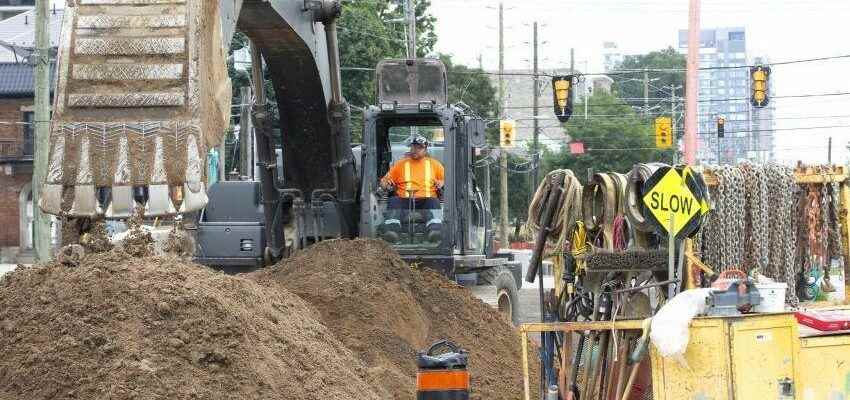Thousands of jobs going begging, more coming down the pike and still London’s jobless rate is going up. The question is why?

Thousands of jobs going begging, more coming down the pike and still London’s jobless rate is going up.
The question is why?
Unemployment in London rose for the third straight month in July, to 6.1 per cent, bucking the national trend that’s left Canada with a record-low, 4.9-per-cent rate that’s about as close as it gets to full employment in this country.
But while the national rate has remained stable, even with more than one million jobs unfilled in Canada, the London-area rate has gone up again amid a growing pile of available jobs — more than 6,000, posted with area employment agencies, and more coming as large employers, like food giant Maple Leaf Foods Ltd. and online retailer Amazon, complete major new operations they’re building here.
How could both things — the unemployment rate and the huge number of unfilled jobs — be going up at the same time?
Analysts say a mix of factors could be at play, including more people looking for work entering the labor force, and being counted in the monthly unemployment numbers, like the latest snapshot that came out Friday, and others being pickier about the kinds of job they want.
Still other workers simply don’t have the skills employers need to fill many of the available positions.
“When people think they can find a job and they start their search process. . . that puts some pressure on the unemployment rate, but if that’s what happening, that’s actually a positive thing for the labor market,” said Audra Bowlus a Western University economics professor.
“The other thing that could be happening is that we have a mismatch between the people who are unemployed and looking for work, and the vacancies that are now available,” she said, adding “that’s more of a problem” if that’s the case.
The explanation is probably somewhere between the two, she said.
If you ask Jason Bates, who chairs the London Region Manufacturing Council, part of the problem is the need for a better trained workforce.
“There’s certainly not enough talent available, especially around skilled trades,” he said. “That has been an ongoing problem for years.
“You have a lot of people retiring and there’s just not sufficient numbers of new talent coming up to replace a lot of those people leaving the workforce.”
Filling certain jobs has become such a challenge, it’s hurting the pace at which some businesses are growing.
It has also led some companies to start looking at automation to help solve staff shortages in the long run, Bates said.
“A lot of plants are looking at it in a different light,” he said.
A survey of London-area businesses this year by the regional workforce planning board found nearly two-thirds of employers are having a hard time laying their hands on enough labour, citing a lack of qualified workers as the main issue.
But Bates also said manufacturers are having trouble finding workers for less skilled positions, including entry-level and other clerical jobs.
It’s not just a problem in manufacturing, said Kapil Lakhotia, head of the London Economic Development Corp.
“We know that there are a lot of industries that are growing significantly in this region that are desperately looking for more workers,” he said.
“What we hear from employers is that, despite the unemployment numbers, they are simply not getting the volume of applications for the open positions that are being advertised.”
If that’s the case, it might be that job-seekers have become more selective, looking for better-paying work amid the rising cost of living or more flexible work arrangements such as work-from-home jobs, said Bowlus.
She said when workers know there are plenty of jobs available, they’re less likely to settle for whatever they can get.
“They have what we would call a ‘high reservation wage,’” she said.
“They want top dollar for their skills, and therefore they’re unwilling to take service sector jobs if they think they can do better. So, they are being very selective about what they’re applying to.”
If Canada heads into a recession, as some analysts believe is coming, the mentality and behavior of those looking for work will likely change, Bowlus said.
Lakhotia said he’s mindful of the rumblings of potential economic troubles ahead, but is confident the London-area economy, with its mix of many different types of employers, can withstand the fallout.
“The diversity of our economy helps us withstand economic cycles better,” he said.
“While we can’t control global economic conditions in our neck of the woods, we have lots of growing employers and solid demand for workers. And we expect that to continue with a pipeline of new projects that are already underway.”
The number of people employed in the London area in July was 294,900, about 30,000 more than in February 2020, just before the start of the pandemic.
The numbers include St. Thomas, Strathroy and portions of Elgin and Middlesex counties.
The area’s labor force participation rate — the share of working-age people employed or seeking work — was 66 per cent in July. That ratio has hovered in that range for months, up from 57.2 per cent three years ago when it was among the lowest in big-city Canada.
Canada’s unemployment rate remained at 4.9 per cent in July, an historic low, unchanged from June amid a national labor shortage.
The market remains exceptionally tight, with more than one million job vacancies and the lowest unemployment rate on record using comparable data going back to 1976.
– with file by Canadian Press
Unemployment rates for July vs. June
LONDON: 6.1 percent (5.8)
ONTARIO: 5.3 percent (5.1)
CANADA: 4.9 percent (unchanged)
